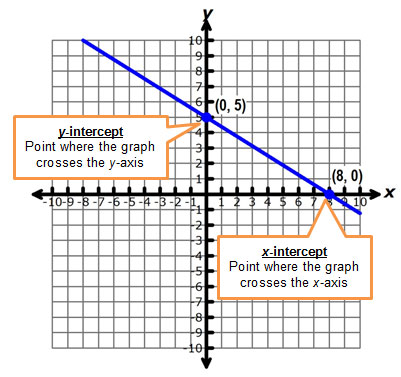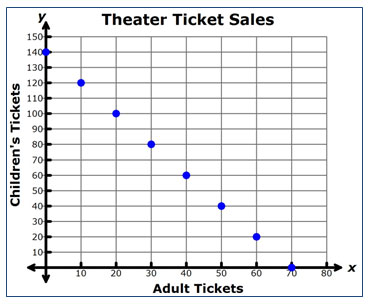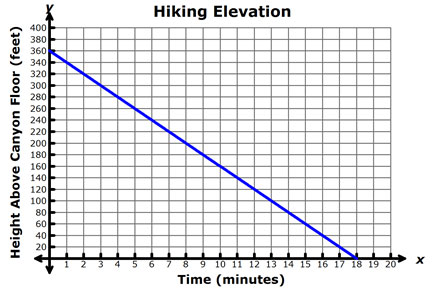

An intercept of any function is a point where the graph of the function crosses, or intercepts, the x-axis or y-axis.
Because there are two axes on a coordinate plane, there can be a x-intercept, which is the point where the graph crosses the x-axis, or a y-intercept, which is the point where the graph crosses the y-axis.

When the linear function is used to represent a real-world situation, the intercepts have significant meaning in the context of the problem.
![]() In the interactive below, you are given a graph that represents a linear function for a particular situation. Identify the x-intercept and y-intercept from the graph by locating the coordinates of the point where the graph crosses the x-axis and the y-axis, respectively. Match the best interpretation of each intercept by clicking and dragging the sentence from the Description Bank to the slot next to each graph.
In the interactive below, you are given a graph that represents a linear function for a particular situation. Identify the x-intercept and y-intercept from the graph by locating the coordinates of the point where the graph crosses the x-axis and the y-axis, respectively. Match the best interpretation of each intercept by clicking and dragging the sentence from the Description Bank to the slot next to each graph.
How can you distinguish between the x-intercept and the y-intercept from a graph?
Interactive popup. Assistance may be required. Which intercept corresponds with which axis? Interactive popup. Assistance may be required.
The x-intercept is the point where the graph crosses the x-axis (horizontal axis) and the y-intercept is the point where the graph crosses the y-axis (vertical axis).
Interactive popup. Assistance may be required.
The x-intercept is the point where the graph crosses the x-axis (horizontal axis) and the y-intercept is the point where the graph crosses the y-axis (vertical axis).
Interpret both the x- and y-intercepts in the relationships shown in the graphs below.

 Interactive popup. Assistance may be required.
The x-intercept, (70, 0), shows that if the theater sells only adult tickets, they must sell 70 adult tickets in order to generate $350 in revenue.
Interactive popup. Assistance may be required.
The x-intercept, (70, 0), shows that if the theater sells only adult tickets, they must sell 70 adult tickets in order to generate $350 in revenue. 

 Interactive popup. Assistance may be required.
The x-intercept, (18, 0), shows that in 18 minutes, the height of the hiker above the canyon floor will be zero; in other words, the hiker will reach the canyon floor in 18 minutes.
Interactive popup. Assistance may be required.
The x-intercept, (18, 0), shows that in 18 minutes, the height of the hiker above the canyon floor will be zero; in other words, the hiker will reach the canyon floor in 18 minutes. 